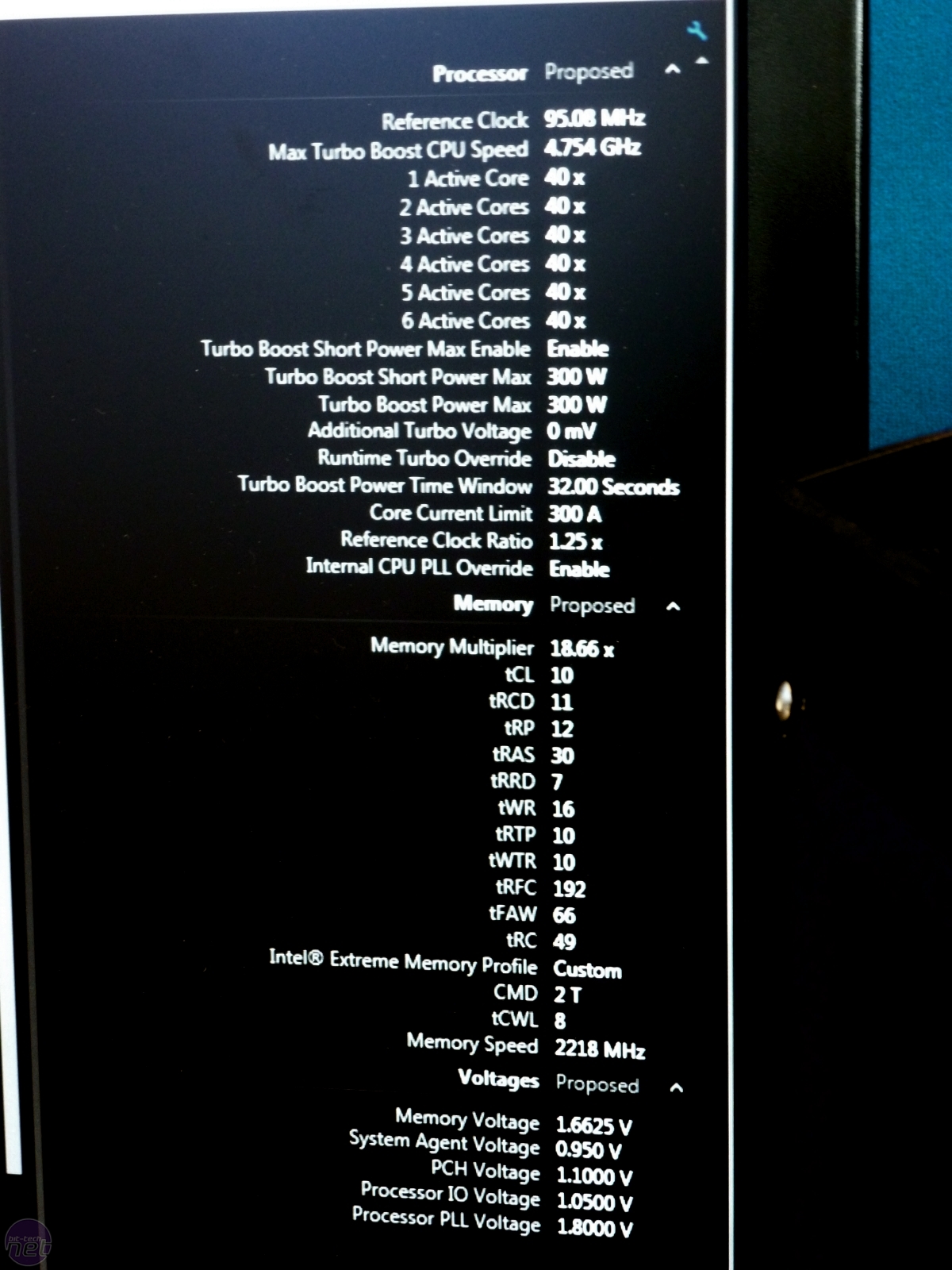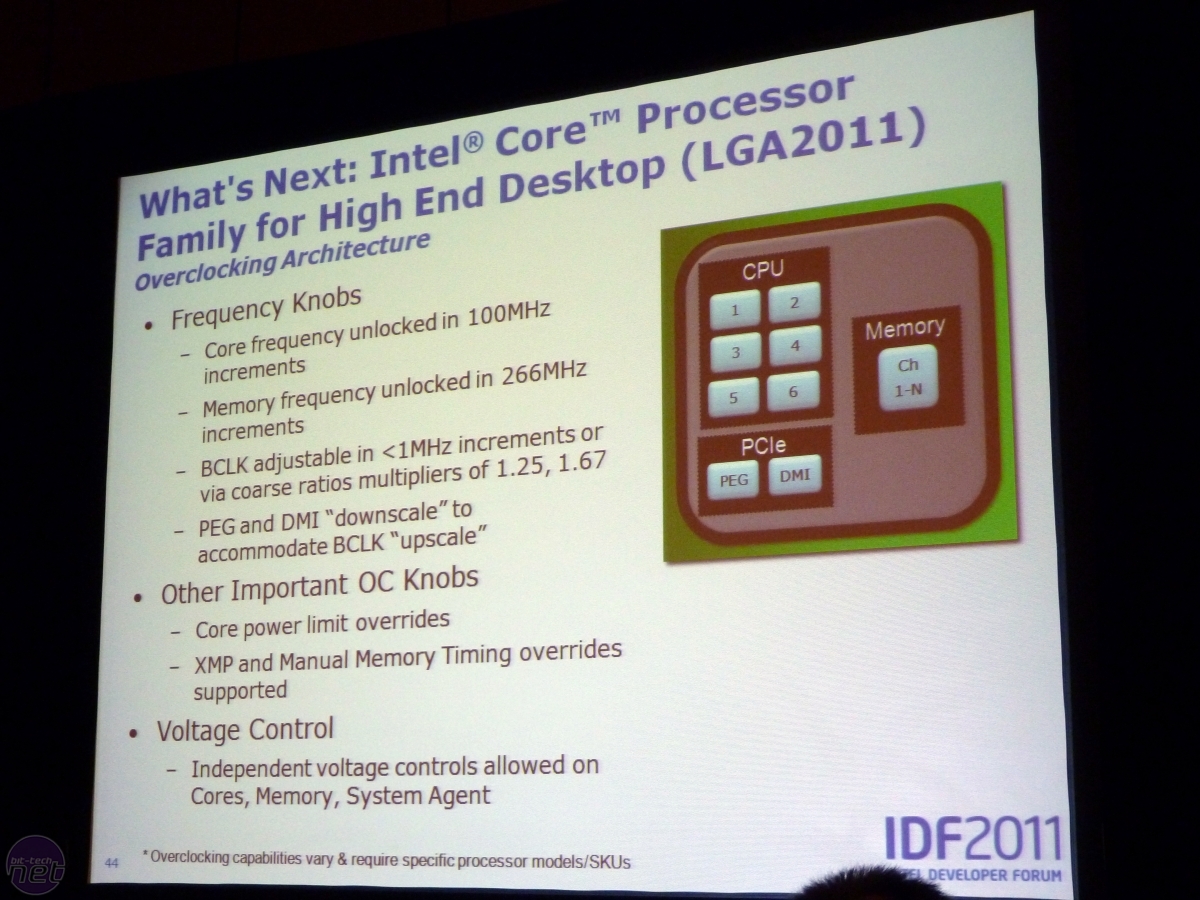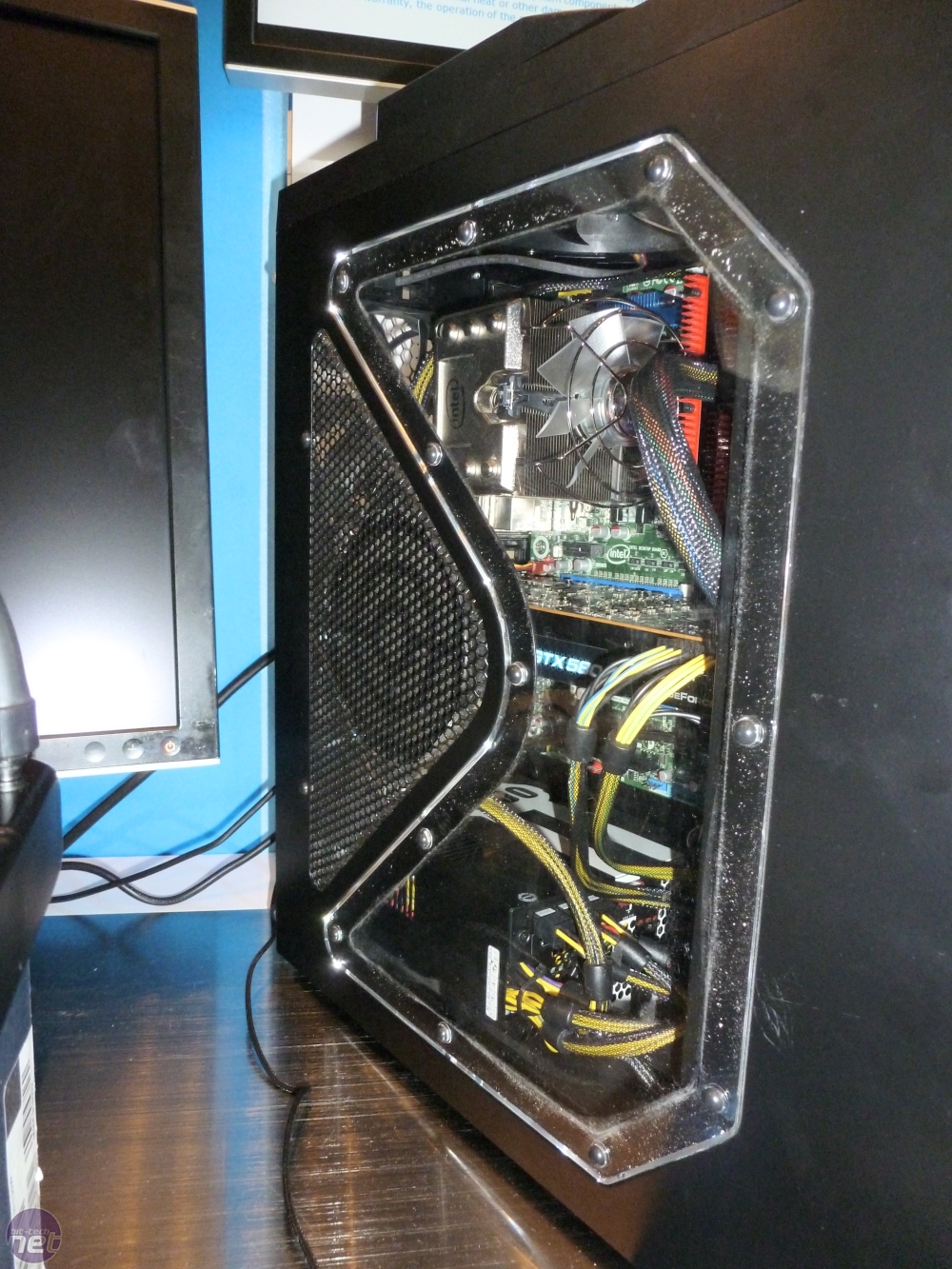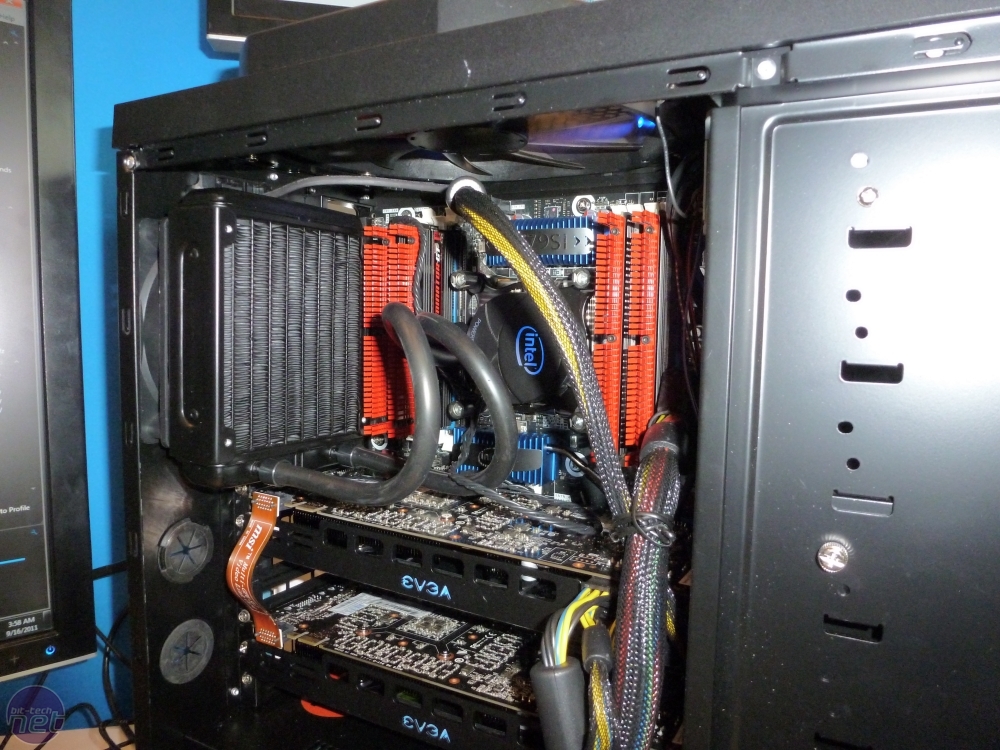Sandy Bridge-E is coming this November, and the new platform will be the spiritual successor to LGA1366. The problem with Sandy Bridge today is that the reference clock is more or less locked, the system quickly becomes unstable or stop working if you change it. This is has been solved with Sandy Bridge-E, kind of.
LGA1155 and Sandy Bridge are limited with the overclocking that is offered. Only the top models Core i5-2500K and Core i7-2600K are worth considering if you want to overclock, since the reference clock can then be changed about +/-5% before things collapse. This is because of how the new architecture communicates with the southbridge.
LGA2011 and Sandy Bridge-E has the same limitations, but Intel has designed a solution. It doesn’t bring back the same possibilities as before Sandy Bridge, but it is a step in the right direction. This is a short guide to how you do it!
The reference clock has its own divider
 There reference clock (BCLK) is at 100 MHz, Intel still recommends that you keep within +/-5%. With this as the starting point, and how Sandy Bridge works today it is realistic to think that the reference clock would be 95 – 105 MHz. With a CPU Multipel at 36x that the quad-core Core i7-3820 can do the overclocking is limited to only 5%.
There reference clock (BCLK) is at 100 MHz, Intel still recommends that you keep within +/-5%. With this as the starting point, and how Sandy Bridge works today it is realistic to think that the reference clock would be 95 – 105 MHz. With a CPU Multipel at 36x that the quad-core Core i7-3820 can do the overclocking is limited to only 5%.
- 105 MHz * 36x = 3 780 MHz
But that is not the case anymore, but the reference clock (BCLK) gets its own divider. One might wonder what it’s good for and why make it so difficult? What it does is simply to re-set a lot of other dividers in the processor, to make sure the system is operational. The new Reference Clock Ratio, will come in two steps, 1.25x and 1.66x.
Then we try again with the locked processor Core i7-3820. This is what the processor shows with the reference clock (BCLK) at 95, 100 and 105 MHz, with CPU Multiplier 36x. We then add Reference Clock Ratio to the batter, which gives us 6 different results.
Reference Clock Ratio 1.25x
- 95 MHz * 1.25 * 36x = 4 275 MHz
- 100 MHz * 1.25 * 36x = 4 500 MHz
- 105 MHz * 1.25 * 36x = 4 725 MHz
Referens Clock Ratio 1.66x
- 95 MHz * 1.66 * 36x = 5 677 MHz
- 100 MHz * 1.66 * 36x = 5 976 MHz
- 105 MHz * 1.66 * 36x = 6 274 MHz
We can see that overclocking also a locked processor is possible, but with a gap of nearly 1 GHz between what is possible with 1.25x and 1.66x. This is not a problem, because we also have the CPU Multiplier. In the example below we focus on getting the processor stable at around 5 GHz, since we are playing with the idea that this is the highest frequency the processor can do on air. We will once again give three examples, with the reference (BCLK) at 95, 100 and 105 MHz. With the reference at 100.4 MHz we hope to hit our magic number.
Overclocking to 5 GHz
- 95 MHz * 1.66 * 32x = 5 046 MHz
- 100 MHz * 1.66 * 30x = 4 980 MHz
- 105 MHz * 1.66 * 29x = 5 054 MHz
- 100,4 MHz * 1.66 * 30x = 5 000 MHz
Intel’s solution is not perfect, since it doesn’t bring back overclocking with reference clocks (BCLK) like it used to, but the possibility to overclock a locked processor is there, which is a step in the right direction. A calculator will be useful when trying to find the right frequency for you, more than ever.
Just like with Sandy Bridge you have to fiddle with the Turbo Boost functions. You need to change the highest possible power consumption, for longterm, or shortterm use.
 Referens Clock Ratio not only affects the processor frequency
Referens Clock Ratio not only affects the processor frequency
We have to keep in mind that changing the reference clock (BCLK) comes at a price. Just like before Sandy Bridge was released, the memory frequency changes. If we have the memory set at 1866 MHz, they will be affected by a change to the reference clock, via via Reference Clock Ratio
Referens Clock Ratio 1x, 1.25x and 1.66x
- 100 MHz * 1.00x * 18.66 = 1 866 MHz
- 100 MHz * 1.25x * 18.66 = 2 332 MHz
- 100 MHz * 1.66x * 18.66 = 3 097 MHz
Nothing weird about that really. Just like before Sandy Bridge and currently is with AMD, keep an eye on those multipliers! In this case it would be recommended to lower Memory Multiplier, since we have a hard time imagining Sandy Bridge-E running stable with memories at over 3000 MHz stable. Sandy Bridge-E will bring Memory Multipliers in steps of 2.66; thus 8.00x, 10.66x, 13.33x, 16.00x, 18,66x and possibly higher.
 |
 |
Intel Sandy Bridge-E will overclock well. Intel showed two systems, both its own air and water cooling that ran at 4754 MHz. bit-tech that is behind the information in the article says that 5000 MHz, or 5 GHz, should not be a problem and then refer to what they say at IDF with hexa-core Sandy Bridge-E.
Ivy Bridge will build on the same principle?
While this article is dedicated to Sandy Bridge-E, we feel a need to include Ivy Bridge. Ivy Bridge will work with the same socket, LGA1155, as Sandy Bridge and is what we are waiting for, if you are not interested in Sandy Bridge-E. We have heard the exact same rumors about Reference Clock Ratio, that we know will be implemented with Sandy Bridge-E.
Rumor has it Ivy Bridge will overclock the same way as described above for Sandy Bridge-E
Today it is Core i5-2500K and Core i7-2600K that are the choice for overclockers. Other and cheaper models are not even worth considering, alas. We hope to see similar overclocking with locked Ivy Bridge models, so you can get cheaper models and to make them perform like more expensive such, which was the very essence of overclocking initially.















